Are you a Quiet Speculation member?
If not, now is a perfect time to join up! Our powerful tools, breaking-news analysis, and exclusive Discord channel will make sure you stay up to date and ahead of the curve.
In my continuing effort to simplify and explain the complicated nature of sideboarding in Modern, I've fielded a number of questions about techniques and specific strategies. This makes me happy, since it shows that my readership is engaged, thoughtful, and inquisitive, everything that I could ask for as an author. What has made me less happy are the questions that boil down to, "should I use The Elephant," even when I don't think the reader knew that The Elephant existed. The Elephant is an important and potent sideboarding strategy, make no mistake, but it's very tricky to pull off successfully and if you make a mistake it will cost you your tournament. This makes answering questions about it awkward and somewhat nerve-wracking.
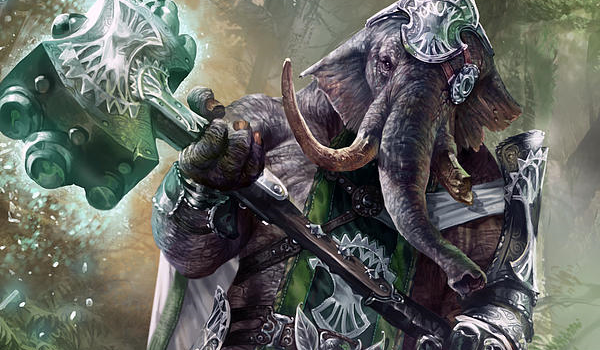
Many pro players employ and extol The Elephant. Recently Mrs. Mulligan endorsed the method and how she uses it in Merfolk. My position on The Elephant is that if you're playing Standard and you aren't using it (or at least trying to) you are wrong. This method was born in Standard, perfected in Standard, and used by many of the best Standard players. It also lends itself best to Standard. If you are using it in Modern, you really need to know what you're doing. To the point that you need to be a certified unequivocal master. It is much harder to do correctly than other methods, and the sheer variety of options make it analytically overwhelming for most players. Do it at your own risk.
[wp_ad_camp_1]
What is The Elephant?
You've all heard about The Elephant, even if you've never heard it called that name. I'm not sure where the name came from, but it was Zvi Mowshowitz that popularized the name and codified the method. If you've never read the linked article, do so now---it's imperative that you understand it for the rest of this to make any sense.
Are you overwhelmed? If not, well done! If so, that's okay. Zvi is a legendary player and Magic theorist for a reason and he writes at the level he thinks at, which doesn't always make his articles the most digestible. Rather than try to process all of the article at once, focus on these things: the opening block quote, the number of decks he prepared for, and the closing two paragraphs. This will cost you some of the nuance and brilliance that make the article great, but it will also give you what you need to understand my argument today. Let me explain.
The Opening Quote
So there's no ambiguity, here's the quote I'm referring to:
Writing out ideal realistic lists for all matchups and then trying to make the unique cards in those lists add up to 75 cards before deciding on the specific 60 for the maindeck and the specific fifteen for the sideboard.
This is The Elephant method. You build your deck as 75 cards and then choose the best 60 to play maindeck based on what you most often want against the most decks, with the remaining 15 in your sideboard existing to tune your decklist. The way it works is that you take each deck you're testing against and pretend that it is the only deck you will face. You then determine the ideal post-board maindeck for that matchup. Then you move onto the next deck and repeat the process. Once you've done this for each matchup you expect, you take the best and most played 75 cards from your testing and make your deck from them. Zvi also included other cards that he sometimes wanted access to as a wish list in case he found room for them.
The Gauntlet
These six decks (seven if you count Golgari, which Zvi didn't actually prepare for) were the decks he tested and prepared his deck against. What is important here is that these are the 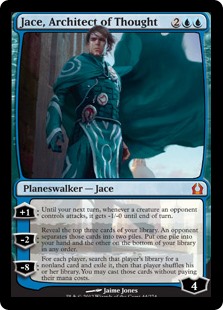 decks he expected to face in their anticipated configurations. He was going into a Block Constructed Pro Tour, a format that had just been completed with the release of Dragon's Maze and was largely unknown. Zvi was trusting his team's ability to read the field, identify the good cards, and pick the good decks so that he could tune his deck correctly. How well this worked will be discussed below. The takeaway is that when you decide to do The Elephant you are at the mercy of your data and experience. Your deck will be very tightly constructed by the end and unless you can simply overpower them you may not have a good plan for something unexpected.
decks he expected to face in their anticipated configurations. He was going into a Block Constructed Pro Tour, a format that had just been completed with the release of Dragon's Maze and was largely unknown. Zvi was trusting his team's ability to read the field, identify the good cards, and pick the good decks so that he could tune his deck correctly. How well this worked will be discussed below. The takeaway is that when you decide to do The Elephant you are at the mercy of your data and experience. Your deck will be very tightly constructed by the end and unless you can simply overpower them you may not have a good plan for something unexpected.
The Conclusion
Zvi made a fatal mistake in his deck construction and it cost him. The Esper control list that he prepared for turned out to be much slower than the lists he actually faced. Esper was also the most played deck at PT Dragon's Maze, which made this mistake even more glaring. As such he was out of position and playing the wrong configuration, which meant that he didn't do very well Day 2. This is very important because he was preparing for a Block Constructed Pro Tour. The smallest constructed format with the most predictable card pool. And Zvi didn't prepare for the right deck.
The Takeaway
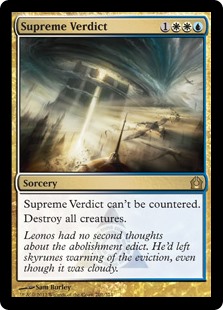 What I want you to understand from Zvi's article is that The Elephant is a very skill-intensive and data-driven form of sideboarding. You are building an ideal decklist for each anticipated matchup and deriving from that the 75 cards which best fit your deck. When you get it right your deck will appear unbeatable. If your data, methods, or assumptions are wrong you will be severely punished. And if a Hall of Famer can make a mistake, so can you.
What I want you to understand from Zvi's article is that The Elephant is a very skill-intensive and data-driven form of sideboarding. You are building an ideal decklist for each anticipated matchup and deriving from that the 75 cards which best fit your deck. When you get it right your deck will appear unbeatable. If your data, methods, or assumptions are wrong you will be severely punished. And if a Hall of Famer can make a mistake, so can you.
Using The Elephant
If I sound down on this method it's because I am. I think it is overhyped and over-utilized. The work that has to go into building your deck using The Elephant is enormous, which come to think of it may be where the name comes from. It is only effective to the degree your data and gauntlet accurately reflect what you will actually face. Thus it is not for everyone, nor for every deck. Zvi mentioned that his Bant list was ideal for The Elephant because it had the answers to everything and could be tuned easily without harming the core of the deck. If your deck has a dedicated core, such as linear aggro or an extremely tight combo deck, then you should never use it. That said there are circumstances when you absolutely should use this method, and to do otherwise is simply wrong.
When to Elephant
You should use The Elephant in known and defined metagames when your deck lacks a defined core that cannot be changed. You are looking at formats that have known best decks that 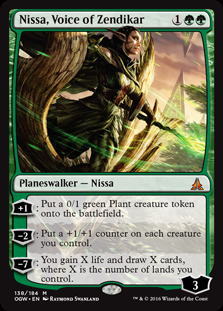 are well defined and tested with lots of data on their nuances and card choices, and you are playing a midrange "good-stuff" deck.
are well defined and tested with lots of data on their nuances and card choices, and you are playing a midrange "good-stuff" deck.
This situation occurs most frequently in mid-season Standard. By then there has been a Pro Tour, some SCG Opens, and a GP or two to define, test, and refine decks. Any brews have had a chance to rise, either as actual pieces of the metagame or as one-hit wonders. In these situations it is unlikely that decks will radically deviate from expected norms and while there will always be rogue decks waiting for an opportunity, you should be able to reliably anticipate each decklist and prepare accordingly. Stable, predictable formats provide stable, predictable data.
This is ideal for The Elephant strategy. You don't have to worry as much about making the wrong assumptions or preparing for the wrong deck. You know exactly what the good cards are and how they are put together to make the best decks. This provides the most opportunity to really develop the strategies to take them apart. The cardpool is also small enough that you can anticipate and prepare for their sideboarding as well. There aren't any overpowering sideboard cards or win-the-game buttons, and most of the options overlap so you can focus on incremental advantage and tuning, which plays into the strength of The Elephant.
The Problem of the Modern Elephant
You've probably picked up on it, but the situation I just described rarely applies to Modern. 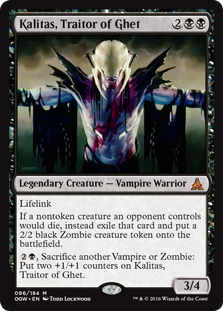 GBx and arguably URx qualify as midrange goodstuff decks but the format is not well defined in the same way Standard is. The cardpool is massive and while you can expect that each archetype will have certain commonly played cards there is no guarantee. There is massive variation between decklists within archetypes so trying to Elephant for them is risky. The deck you choose to test against might be the Next Big Thing, or it might be a case where the pilot got lucky with a suboptimal deck. Data uncertainty and instability is far greater in Modern than in Standard, so trying to use data-specific strategies is risky.
GBx and arguably URx qualify as midrange goodstuff decks but the format is not well defined in the same way Standard is. The cardpool is massive and while you can expect that each archetype will have certain commonly played cards there is no guarantee. There is massive variation between decklists within archetypes so trying to Elephant for them is risky. The deck you choose to test against might be the Next Big Thing, or it might be a case where the pilot got lucky with a suboptimal deck. Data uncertainty and instability is far greater in Modern than in Standard, so trying to use data-specific strategies is risky.
When I say data-specific, I mean that you are relying on a certain, relatively limited data set to make your conclusions. Data-driven analysis is essential to be successful in Magic, especially Modern, which is the raison d'etre of this site. You should be looking at results and data to inform your decisions about card and deck choice. What you should not do is use a small dataset and heavily metagame to that dataset, which is what The Elephant demands of you. It works in Standard because the total data is relatively small but in Modern there is so much variation and uncertainty that using this method or something similar invites tunnel vision. I don't think it's worth the risk.
Even if you manage to overcome the data uncertainty problems, you have a logistical problem. Can you actually prepare a 75 that deals with every deck? It's certainly possible, but 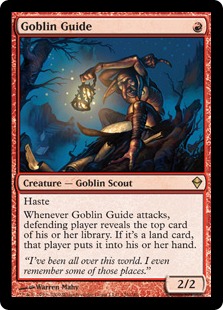 it's very hard. I once again refer you to our Top Decks page. Looking just at Tier 1, consider how differently Jund plays from Infect. Burn from Tron. Affinity from everything else. Can you build an Elephant that encompasses all of them? Maybe, but it will be very tricky and will require compromises.
it's very hard. I once again refer you to our Top Decks page. Looking just at Tier 1, consider how differently Jund plays from Infect. Burn from Tron. Affinity from everything else. Can you build an Elephant that encompasses all of them? Maybe, but it will be very tricky and will require compromises.
That doesn't even get into the problem of preparing for Tier 2. Trying to prepare for decks as radically different as Ad Nauseam and Jeskai Control is liable to pull your deck apart. You're not going to be able to completely Elephant for every deck. Even if you do, your deck will be full of compromise cards that are second-best replacements for the more targeted hate cards which you're playing because they're more useful against more decks.
I haven't seen this work often enough to recommend it to most players. It does work sometimes, but you have to get lucky and guess the field exactly right to make it work. The full Elephant is not something to do for an open tournament. It could be appropriate and effective at an SCG Invitational or a local tournament, but Modern is too diverse to game your deck so heavily in a larger field.
The Solution
That being said, the Modern cardpool is so large that you can approximate The Elephant during deck construction through card choices that fulfill multiple roles based on matchups.  For example, Scavenging Ooze is a mediocre hate card against Dredge but is very good against Snapcaster Mage and decks with lots of creatures. This allows it to sit in for more specialized cards and free up sideboard space.
For example, Scavenging Ooze is a mediocre hate card against Dredge but is very good against Snapcaster Mage and decks with lots of creatures. This allows it to sit in for more specialized cards and free up sideboard space.
I realize that last week I said you shouldn't preboard and that Scavenging Ooze wasn't an acceptable sideboard card, but this is a different situation. When you're doing a partial Elephant you pick the sideboard effects that you need, like artifact destruction or graveyard hate, and determine the number of that effect you need to beat the deck you're targeting. Then decide whether you can maindeck a card that partially fulfills that role and advances your maindeck plan, allowing you to shave the number of sideboard slots you have to dedicate to that matchup.
Let's use Jund as an example. Say that in the course of your testing you decide that you need to have answers to enchantments that cost four or more in enough matchups that you need enchantment removal. You also need to remove higher-cost artifacts and creatures. I'll arbitrarily say that you have determined a minimum of five answers is required.
You could place five cards that answer artifacts or enchantments in your sideboard (say Reclamation Sage and Naturalize), or you could split the card slots between the maindeck and sideboard. The maindeck card doesn't need to be a "real" hate card like the Sage, but it fulfills the same role. Maelstrom Pulse kills everything, so it could count towards your total. I wouldn't count it as a full card, mind you, but even if it's just .25 of a hate card that still reduces the need to have that effect in your sideboard in large numbers, allowing you to play more powerful, specialized cards.
Jund plays a few Ancient Grudges and sometimes a Shatterstorm because of Affinity, but it would probably play a lot more if Inquisition of Kozilek, Kolaghan's Command, and Abrupt Decay didn't partially count towards the total number of hate cards they actually need to win. You cannot directly Elephant for every deck in Modern, but if you determine the number of effects that you need from your sideboard you can build a very broad one by utilizing maindeck cards.
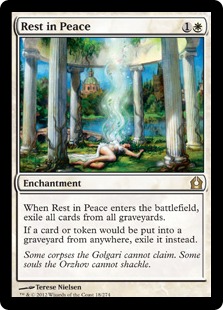 This is incidentally why I advocated playing dedicated graveyard hate in your sideboard two weeks ago. The mana limitations of Scavenging Ooze are such that it barely counts towards the general graveyard hate you need to punish those decks that take advantage of the number of cards in their graveyard rather than very specific ones---maybe 10% of a card. It isn't that hard for Dredge to overwhelm an Ooze, and Grixis only cares about quantity so that it can Delve. You need a hate card that also cares about keeping large numbers of cards out of the graveyard to actually impact their plans.
This is incidentally why I advocated playing dedicated graveyard hate in your sideboard two weeks ago. The mana limitations of Scavenging Ooze are such that it barely counts towards the general graveyard hate you need to punish those decks that take advantage of the number of cards in their graveyard rather than very specific ones---maybe 10% of a card. It isn't that hard for Dredge to overwhelm an Ooze, and Grixis only cares about quantity so that it can Delve. You need a hate card that also cares about keeping large numbers of cards out of the graveyard to actually impact their plans.
This is also a weakness of this method, because it is easy to lull yourself into a false sense of security with your maindeck partial hate cards and forget that they are only partially hate cards. It's also easily to misevaluate their total impact or what matchups they actually hit. You need to be reasonably experienced as a player and deckbuilder to make this work, which is why I tell newer players to focus on the bullets strategy. Free wins are important to help build that experience.
Find What Works
If you use The Elephant and it works for you, don't let me discourage you. Experimental results always trump theory. However, if you're looking for a new strategy or are confused why your current one isn't working, let this be a guide. Don't try to metagame or prepare beyond your ability. Modern is a vast and difficult format that takes time to understand and adapt to, but once you do there is nearly limitless potential for experimentation. So don't get discouraged, get experienced! I'll see you next week with something completely different.




Interesting! I’d never heard of The Elephant before. Good food for thought.
I’ve done things similar to Elephant for Merfolk in the past, usually hitting all the tier 1 decks and a good chunk of tier 2 (so about 60% of the field). I rearranged the deck using physical cards rather than writing lists and constrained myself to somewhat plausible sideboard choices rather than just opening up the entire field.
Mainly, I found it useful for the following:
-Small Tweaks to the Main Deck. Honestly, the Main Deck of Mono-Blue Merfolk is mostly solved, so it’s really about making a few tweaks to the handful of flex slots. For example, if I found that Phantasmal Image almost never made it into my ideal deck, that would be a good argument for not running it or cutting down.
-Moderate Changes to the Sideboard: Mainly, this was about finding the right combination of popular sideboard slots to use and whether to favor Negate over Spell Pierce, for example. Stuff like that.
-Minimize Over-boarding: The biggest benefit to actually constructing the “best build” for each match up was that I realized I had been over boarding a lot of my match ups. I’d see that I had 8 or so cards in the SB that were good in the match up and feel the need to bring them all in, even if it hurt the core of the deck. So this process helped me take a bit more of a lighter touch.
Ultimately, in Modern it’s probably fine to work with the core of the main deck and put together a core of sideboard cards and then tinker a bit around the edges, going through each match-up to see how you’d sideboard and swapping 1-2 cards out here and there until you arrive at a good main and side.
Also, if pressed for time I think you can cheat a bit in any format and go to a site like mtgtop8 and do a side by side comparison of decks that have done well in the last couple of weeks. If 80%+ of the decks play a card in the main or the side, you can feel pretty safe including it, at least provisionally. Then you can tinker with the match-ups to figure out the rest.
I’ve had similar experiences to Rory as well. I would describe the approach I took as a “semi-Elephant”, where I basically identified the decks where Merfolk’s Game 1 aggro rush wasn’t going to necessarily get me there, and adjusted accordingly. I have to say I’ve been fairly pleased with the results, but I think that’s in part because I have the luxury of not having to metagame for every single deck thanks to having a solid, proactive gameplan. A full elephant, as David describes, seems like a daunting task for Modern.
I’ll also note that I’ve found this article very informative – I hadn’t heard of the Elephant term before, though I’ve seen the method applied, and I think that the description of how to employ it was very apt and well-put. Good stuff, David.
One thought I have for you–the full elephant is not necessarily good in modern, but often elephanting your sideboard can be helpful–If you take all of the matchups, identify how many effects you need from the board for each, and average those (weighting by expected metagame %), it can be a good way to find the optimal 15 in the board for a given deck.
Yes, exactly, That’s why I was proposing the partial Elephant. I do think that methods like these need refinement because I’m not yet convinced that they’re analytically valid, so be careful. That said thinking along these lines is a productive way to improve your sideboarding.
I’m curious how you feel about using the Elephant with a deck like modern death and taxes. The deck has a large number of viable options, both for main and sideboard cards, and changing what mix of cards you have greatly changes your ability to fight some popular decks. Since you have to make decisions on broad field of diverse strategies, using the Elephant might be able to show what decks you are capable of preparing for and understanding what decks will necessarily be bad matchups.
It would appear to be a good candidate with some caveats. There are a lot of different versions and if you’re going down this road you need to pick one baseline deck and go from there. Mono-white, Eldrazi, BW, etc. are all going to yield different results and will require different iterations of the Elephant. I think that it’s a good idea to try, though I’m not sure you’ll find anything out about the bad matchups you didn’t know before you started. It’s probably best to just focus on the winnable good matchups.
I went through the process (to the best of my ability, I am by no means an expert) and found mostly information I already knew, but with a few interesting blips. First, I found that Thalia is in an interesting spot right now, and that between being a first striker, and having her ability, she is very close to being an all star. in fact, I found that in 50% of matchups I wanted a fourth copy of her (the list I was looking at had 3) so playing one in the board may actually be a smart move. Second I found that I was greatly underestimating pithing needle in modern. I found that close to 80% of matchups wanted the first pithing needle, and a further 50% of matchups wanted a second. that’s probably enough to warrant mainboarding needle (or revoker), which I had never anticipated.
Another tidbit I found interesting was that I did not find a matchup where neither pithing needle nor Thalia were good enough to justify boarding into. It’s pretty telling about the strength of DnT that these cards are applicable in a majority of matchups, but not a massive majority. A closing thought I have is that if thalia is good enough to board into, it may be more worthwhile to keep a thorn of amethyst sided since some decks (looking at you jeskai) have a much harder time removing artifacts than creatures.
I’ve said it a lot, Pithing Needle is severely underplayed. If Revoker weren’t so fragile I would definitely maindeck it for that reason. I don’t know about Thorn against Jeskai because they tend to board in Engineered Explosives, but it might be worthwhile to test. Interesting results, I hope that this method serves you well.
This was a great article, David, as your whole series on sideboarding has been. I’m curious why you restrict decks that can Elephant to such a small portion of the available decks in Modern. I can certainly see where a deck like Affinity, with a dedicated core of 40 cards, or Storm, where there are a limited number of “best cards are best” that advance the decks’ game plan, cannot Elephant. However, I don’t necessarily agree that a deck needs to be either a midrange or a goodstuff deck in order to effectively employ the Elephant. I’d love to hear your perspective on why I’m wrong here so I can keep tuning my own Modern play.
First, the concept of a dedicated core and it’s relationship to the Elephant needs some refinement. The best example of this comes from, I think, UR/x Delver (and more broadly, tempo) decks. UR/x Delver variants do have an extensive dedicated core, but since the core only requires you to have 27+ instants and sorceries to reliably flip your Delvers, you have a lot of room to Elephant in a deck that is neither really a midrange nor a goodstuff deck. You can elephant your instants and sorceries between your main and sideboards without compromising your core because the core of the deck does not require specific cards, but card types. The prior post’s Hatebears example is another good example, where your deck core consists of the types of hate you plan to employ, which are flexible and encompass a broad range of card types, strategies, and configurations. Once again, Hatebears is neither, really, a “midrange” or a “goodstuff” deck, but employs a defined pool of cards with certain restrictions to accomplish it’s game plan.
Second, I think that the point you make about Elephanting in Modern being problematic due to card pool size isn’t quite as damning as you posit. While it is true that Modern has access to exponentially more cards than a standard environment, it is also true that we have years and years of data on commonly played bullets, answers, and flex slot cards for specific matchups in all colors relatively easily identified. In other words, I would argue that there is a working “industry standard” that functions, at minimum, as a starting pool of cards not much bigger than Block Constructed, where Zvi wrote about the Elephant.
What I mean is that if you are going to Elephant your deck you need to have a deck that is as flexible as possible. To make the deck work you have to be playing the best cards possible in your colors and have as few unchangeable slots as possible. You are looking to prepare the best configuration of your deck for all matchups, and this typically means that you are looking at a deck full of answers. There’s just not a lot of reason to do this if your plan is to kill them quickly all the time. You’re looking for a more interactive game where you will win via superior positioning. This tends to only be true for midrange decks like Jund or Standard decks. Is this universally true? Certainly not, but it is the general rule.
I tend to think of decks with cores as having a large number of cards that you absolutely cannot change for the deck to function or be recognizable as that deck. Affinity and Storm fall into this category. Delver does not. There is considerable variation between lists in terms of its total composition and general plan. This is either because the core has not yet been found or because the general URx plan lends itself well to tuning and building your deck to suit your own taste.
I hear this a lot and I do not believe that it is true. I think that players unnecessarily limit themselves to only the known good cards and do not explore the actual pool enough. We have tunnel vision on the card pool, and I’ll be talking about that next week.